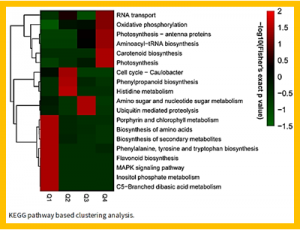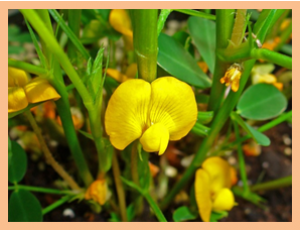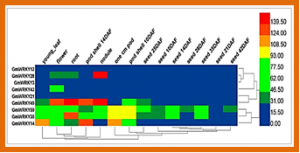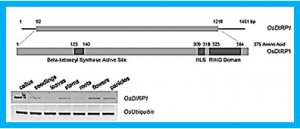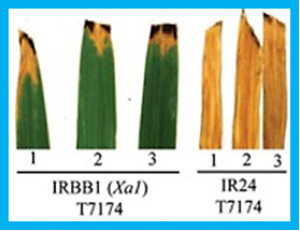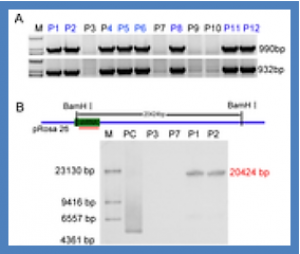Drought stress is one of the potent abiotic stress limiting cassava (Manihot esculenta) yield globally, but studies addressing both physiological and proteomic responses that how cassava crops can adjust their growth and metabolism under drought conditions are lacking. Combining leaf physiological and proteomic characteristics strongly allied with drought tolerance should results in enhanced drought tolerance in cassava crop.
Genome-editing has revolutionized biology. When coupled with a recently streamlined regulatory process by the U.S. Department of Agriculture and the potential to generate transgene-free varieties, genome-editing provides a new avenue for crop improvement. For heterozygous, polyploid and vegetatively propagated crops such as cultivated potato, Solanum tuberosum Group Tuberosum L., genome-editing presents tremendous opportunities for trait improvement.
Drought stress has adverse effects on growth, water relations, photosynthesis and yield of groundnut. WRKY transcription factors (TFs) are the plant-specific TFs which regulate several down-stream stress-responsive genes and play an essential role in plant biotic and abiotic stress responses. We found that WRKY3 gene is highly up-regulated under drought stress conditions and therefore isolated a new WRKY3TF gene from a drought-adapted horsegram (Macrotyloma uniflorum Lam. Verdc.).
WRKYs are important regulators in plant development and stress responses. However, knowledge of this superfamily in soybean is limited. In this study, we characterized the drought- and salt-induced gene GmWRKY12 based on RNA-Seq and qRT-PCR. GmWRKY12, which is 714 bp in length, encoded 237 amino acids and grouped into WRKY II. The promoter region of GmWRKY12 included ABER4, MYB, MYC, GT-1, W-box and DPBF cis-elements, which possibly participate in abscisic acid (ABA), drought and salt stress responses.
As higher plants are sessile organisms, they are unable to move to more favorable places; thus, they have developed the ability to survive under potentially detrimental conditions. Ubiquitination is a crucial post-translational protein modification and participates in abiotic stress responses in higher plants. In this study, we identified and characterized OsDIRP1 (Oryza sativa Drought-Induced RING Protein 1), a nuclear-localized putative RING E3 ubiquitin (Ub) ligase in rice (Oryza sativa L.)
The bacterial blight caused by Xanthomonas oryzae pv. oryzae (Xoo) is the most devastating bacterial disease of rice worldwide. A number of dominant major disease resistance (MR) genes and recessive MR genes against Xoo have been cloned and molecularly characterized in the last two decades. However, how these MR genes mediated-resistances occur at the cytological level is largely unknown.
Nees & Arn. ex Watt, a perennial wild rice species with a GG genome, preserves many important genes for cultivated rice ( L.) improvement. At present, however, no genetic resource is available for studying . Here, we report 91,562 high-quality transcripts of assembled de novo. Moreover, comparative transcriptome analysis revealed that 1311 single-copy orthologous pairs shared by and (Zoll. & Moritzi) Baill. that may have undergone adaptive evolution.
Classical swine fever (CSF) caused by classical swine fever virus (CSFV) is one of the most detrimental diseases, and leads to significant economic losses in the swine industry. Despite efforts by many government authorities to stamp out the disease from national pig populations, the disease remains widespread. Here, antiviral small hairpin RNAs (shRNAs) were selected and then inserted at the porcine Rosa26 (pRosa26) locus via a CRISPR/Cas9-mediated knock-in strategy. Finally, anti-CSFV transgenic (TG) pigs were produced by somatic nuclear transfer (SCNT).
The GMO90+ project was designed to identify biomarkers of exposure or health effects in Wistar Han RCC rats exposed in their diet to two genetically-modified plants (GMP) and assess additional information with the use of metabolomic and transcriptomic techniques. Rats were fed for six-months with 8 maize-based diets at 33% that comprised either MON810 (11% and 33%) or NK603 grains (11% and 33 % with or without glyphosate treatment) or their corresponding near-isogenic controls.
Plant phospholipase D (PLD), which can hydrolyze membrane phospholipids to produce phosphatidic acid (PA), a secondary signaling molecule, has been proposed to function in diverse plant stress responses. Both PLD and PA play key roles in plant growth, development, and cellular processes. PLD was suggested to mediate the regulation of stomatal movements by abscisic acid (ABA) as a response to water deficit.


 Curently online :
Curently online :
 Total visitors :
Total visitors :
